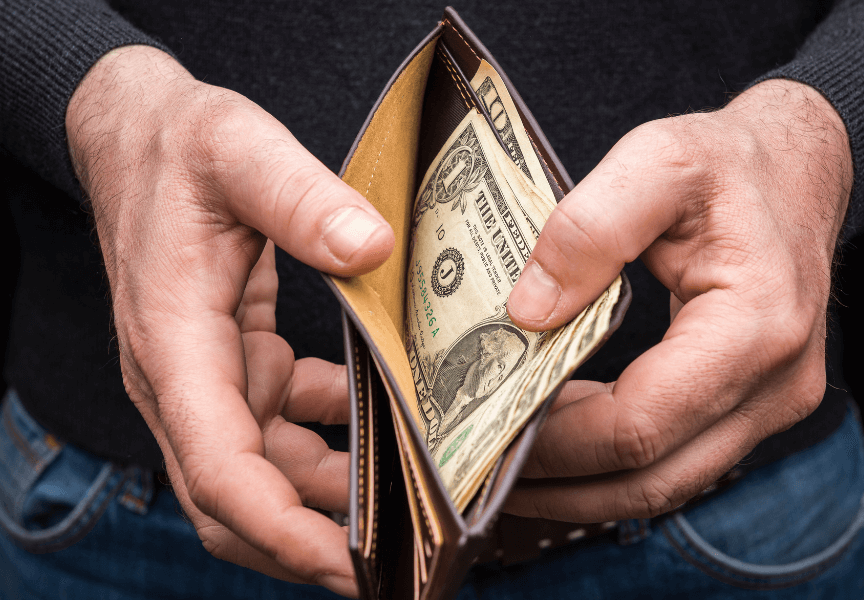Are Banks Safe in a Recession?
Reading time: 8 minutes
February 16th, 2024
Amidst elevated inflation, higher interest rates and gas prices, supply chain disruption, and the lingering COVID pandemic, some financial analysts believe the United States’ economy could be on the brink of a recession. While this may be stressful to hear; any potential economic downturn can lead to feelings of anxiety about one’s careers, finances, and the future.
Despite these ongoing challenging times, one thing that you shouldn’t need to worry about is whether or not your deposits are safe in your bank: All deposits in government-insured banks, such as Bank of Hawaii, are insured by the Federal Deposit Insurance Corporation (FDIC) up to $250,000 per depositor, per insured bank, for account ownership category. In fact, an FDIC-insured bank account is one of the safest places to keep your money.
If you’re unsure if banks are safe, what a recession is, why and how the FDIC insures your money, or about Bank of Hawaii’s reputation as a trusted financial institution, here’s a quick guide to learn more.
About the FDIC
The Federal Deposit Insurance Corporation (FDIC) is an independent agency that was created by Congress to protect bank depositors and to boost public confidence in the country’s financial system following the Great Depression. After the stock market crash of 1929, anxious investors began withdrawing their money from banks in cash. Banks across the country ran out of cash and faced sudden bankruptcy; about 9,000 banks failed, resulting in the loss of billions over a four-year period for depositors.
Shortly after taking office in 1933, President Franklin D. Roosevelt passed emergency legislation as part of his legislative agenda known as the “New Deal,” which included the creation of several agencies and initiatives to stabilize the American banking system. FDR’s Banking Act of 1933 established the FDIC and extended federal oversight to all commercial banks for the first time.
When the FDIC deposit insurance first went into effect at the start of 1934, it covered deposits of only $2,500. By that July, that amount doubled to $5,000. The FDIC’s coverage would increase over the next several decades in order to keep up with inflation, various crises, and other factors—from $10,000 in 1950 to $15,000 in 1966, and $20,000 in 1969. By 1980, the FDIC insured consumers for up to $100,000 per depositor, per insured bank.
To counter the effects of the financial crisis in 2008, then-President Obama signed several legislative measures into law, including the Dodd-Frank Wall Street Reform and Consumer Protection Act, which increased the FDIC insurance limit on bank deposits to $250,000 per depositor, per insured bank, for each account ownership category. This is the current coverage amount today. (Consumers with more than $250,000 can potentially increase their protection by having accounts at other banks or making deposits into different types of accounts at the same bank.)
About Recessions and Ensuring Deposit Insurance
In short, a recession is a period of economic decline. As unfortunate as they are, recessions are actually a normal part of the business cycle, which rises and falls from periods of expansion (economic growth), peak (the highest point of a cycle), contraction (economic decline), and trough (the bottom of a cycle). According to the National Bureau of Economic Research, there have been 33 recessions in the United States since 1857.
If the United States were to enter a recession, the funds you have saved at a bank aren’t at risk of becoming lost or inaccessible the same way they were during the Great Depression. There are many more laws and pieces of legislation that protect your money than in the 1930s. When necessary, the FDIC also has the ability to take over banks in the U.S. that are at jeopardy of failing in order to ensure that all the bank’s depositors have access to their funds. However, there are two important distinctions to keep in mind:
The first is that the FDIC does not insure all types of accounts offered at Member FDIC institutions. The FDIC only covers checking and savings accounts, certificates of deposits (CDs), cashier’s checks, money orders, money market deposit accounts (MMDA), and negotiable orders of withdrawal (NOW), and other, official bank-issued items. Accounts that the FDIC does not cover include stocks, bonds, money market funds, U.S. Treasury securities (T-bills), annuities, life insurance policies, and the contents of safe deposit boxes.
The second important thing to remember is that not all banks are insured by the FDIC. To ensure that your bank is FDIC insured, you can:
- Call the FDIC toll-free at 1-877-275-3342
- Look up any bank online at the FDIC’s “BankFind” database, or
- Look for signs and plaques that say “Member FDIC” wherever deposits are received at your bank (Member FDIC banks will also include this on their website, often in the footer at the bottom of every page).
About Bank of Hawaii
Bank of Hawaii is FDIC insured, and has been since 1959. In 2022, Bank of Hawaii was ranked No. 3 among America’s Most Trusted Companies by Newsweek in the banking category and was the only Hawaii business to appear on the list.
For more than 125 years, we have been committed to our customers and keeping their money safe, and we’re dedicated to helping the communities we serve weather any storm.
To learn more about the FDIC or FDIC-insured deposits, visit the official FDIC website and the FDIC’s Insured Deposits webpage.
You're about to exit BOH.com
Links to other sites are provided as a service to you by Bank of Hawaii. These other sites are neither owned nor maintained by Bank of Hawaii. Bank of Hawaii shall not be responsible for the content and/or accuracy of any information contained in these other sites or for the personal or credit card information you provide to these sites.




